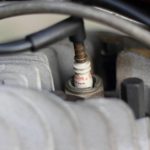Quick Navigation
A head gasket serves as a seal. Its failure will cause a rapid loss of pressure in your engine. The pistons found in the combustion chamber will not be strong enough to fire with force.
Due to pressure loss, you will notice a considerable reduction of power.

Most problems with your vehicle’s head gasket begin as a minor crack before being entirely blown. If you don’t care for such cracks, they will enlarge over time, causing more damage.
With a blown head gasket, the car will not run. The blown head gasket could either be the cause or the result.
A blown head gasket is a significant engine issue. It can cause a partial or complete loss of cylinder compression by mixing two fluids that should be kept separate.
Is It Possible To Start A Car With A Blown Gasket?
Your car with a blown gasket will likely start, but more car parts can get damaged if it’s a significant issue.
The work of a head gasket is to prevent debris from entering the engine and mixing with the engine oil.
When it fails, gases, oil, and coolants will leak and find their way into areas they shouldn’t.
A leaking coolant may mix with your motor oil. Your motor oil then dilutes, making it impossible for the engine to lubricate essential parts.
Parts like the camshaft or crank bearings will get damaged if they are not lubricated.
Starting A Car With A Blown Gasket
If there are no other problems apart from a blown gasket, then your car should be in a position to start.
Let us look at the various ways you can start your car, even with a blown gasket.
Continuously Add Coolant
The greatest challenge when you have a blown gasket is keeping your engine from overheating. Make sure there is some coolant in your coolant reservoir.
You will have to add a coolant continuously when you start your car. Make sure you have the correct coolant for your car.
It should be premixed; if not, add distilled water in the ratio of 50/50.
It would be best if you kept checking the coolant every few miles to prevent an engine knock due to overheating.
Open the radiator cap and keep on checking to see if the coolant seems to be having some air bubbles.
If it has some bubbles, it leaks through the head gasket, and you have to continue adding coolant.
Use A Head Gasket Sealer
Before your head gasket gets fully blown, it starts as a small crack. To prevent the crack from widening, use a head gasket sealer.
Some head gasket sealers are K-seal ultimate, K-seal HD, K-seal, or the blue devil head gasket sealer.
Dealing with a full-blown gasket is very expensive; try to find a solution before a significant problem occurs.
You will have to pour a head gasket sealer into your radiator. Before doing that, make sure your engine is not running, which is cold.
Once cold, remove the radiator cap. If the radiator doesn’t have a cap, remove the one from the overflow reservoir.
Shake the head gasket sealant and add it to the radiator or the overflow. Add a coolant, start the engine, let it run for about 15 minutes, turn off the engine, and let it cool.
After a few days, check if the oil leaks have stopped. That means the sealant could seal the cracks and the gaps in the blown head gasket.
If the overheating issue has stopped, it means the sealant worked. Should you notice that the sealant has not worked, you may have to replace the head gasket.

How To Avoid Blowing A Head Gasket
When you drive your car often with the engine overheating, there is a high chance of blowing your head gasket off.
Your car’s cooling system should always be in good working condition. Once you notice that your car is overheating, the best thing is to stop and let it cool first.
If you still intend to continue your journey refill the radiator if it has boiled over.
You can check the cooling system and make sure that the radiator is working well and there are no leaks.
Your car’s thermostat should be opening correctly, and the coolant level should be at the desired level. The car’s fan should also be working and in good condition.
Looking for combustion gases in the cooling system is another way of knowing whether the head gasket has blown off.
When the compression fluid has leaked into the cooling system, that’s another sign that your head gasket has blown off. Remove the radiator cap, and you can then start the car.
How Long Can You Drive A Car With Blown Head Gasket?
It is tough to know the period you’ll be able to start your car with a blown head gasket. Some people have stated that they have started and driven a car for a whole month.
But this period is determined by the condition of your car.
Depending on the severity of the leak, you can start and drive for a short or long time. However, if this problem persists, the engine may be damaged and lose its power.
The coolant level will drop, causing the engine to overheat.
Is A Blown Head Gasket Worth Fixing?
After a while of driving around with a blown gasket, it will reach a point where you have to make a decision.
You must decide to repair or not, especially if the problem persists. If your car is in good condition, it may be worthwhile to repair.
However, there are a few things to keep in mind:
- What would be the resale value of your car if sold?
- The total estimates of repairing your car.
- If the cost of repairing is three times the resale value, then it may be time for a new car.
A professional technician is an ideal person to perform the estimate. Of course, make sure it’s someone you can trust who has worked with your car’s brand before.
Obtaining an estimate may take several days, requiring your vehicle to remain at the workshop.
Inflate the cost estimates once they’ve been issued to account for any unexpected costs that may develop.
Head gaskets can fail in various ways, each having a few additional defective components.
Damaged camshafts or catalysts, broken or deformed cylinder heads, or a blown turbocharger are all examples of unexpected costs.
The head gasket will usually be sent to a professional for further testing by most shops. Cracks in the coolant route are checked using pressure testing.
Conclusion
Like any other problem with your car, a blown head gasket is something that needs to be addressed. If some parts are in poor condition, the rest of the car will be in poor condition.
Ignoring blown head gaskets can cause severe engine damage, and restoring the ignition system is expensive.
Once the engine develops a problem, replacing it with a new one may become necessary, which is costly. The engine is affected by the blown head gasket and other parts.
Having a blown head gasket requires immediate action if you don’t want engine failure.

James has been a car enthusiast since his childhood when he learned the differences between a ford and a chevy from his father. He loves to drive and restore old cars with a special drive for Italian marvels. Currently, he has a 1968 Alfa Romeo. He has studied aeronautics and civil aviation in his college and still gets smitten by Galant SS and Lancer GSR.
He is a New York-based product training director working with a giant automotive retailer. He loves to review and uncover the vehicles and their fascinating stories. He believes in keeping it legitimate with a keen passion for research on the latest technological upgrades in cars. While reading his articles or blogs, you can sense the extensive research and dedication backing the piece of text. He loves fried chicken, music, and spending quality time with his pet dog.






